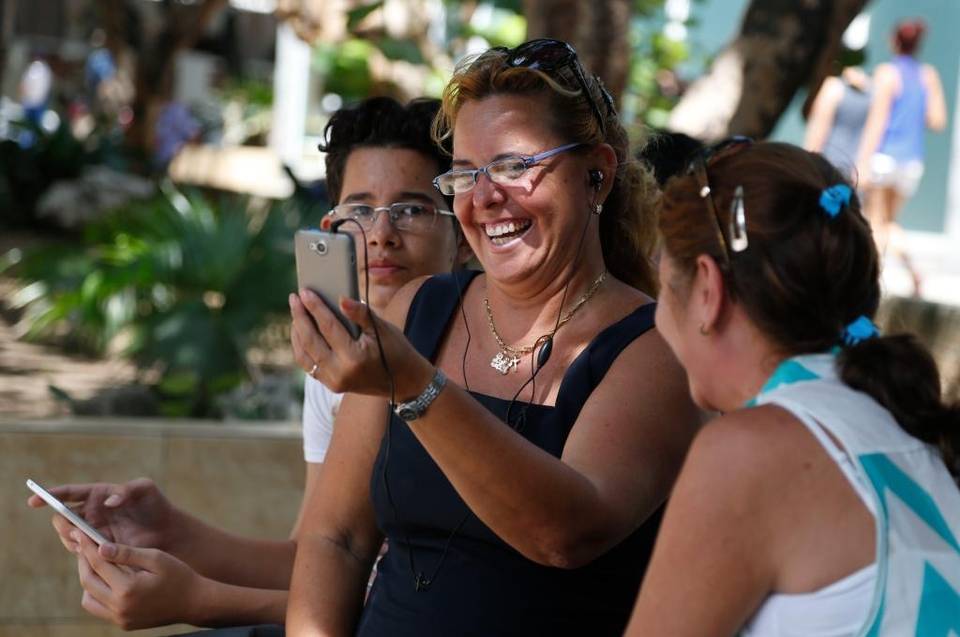
Yoani Sanchez, El Nuevo Herald, 10 January 2016 – She raises the phone and holds it in front of her eyes. A tear rolls down her cheek while her son tells her, in a video call, that early mornings on the border “aren’t that cold” and he has “a mattress to sleep on.” Thousands of immigrant Cubans, stranded in Costa Rica and Nicaragua, are in contact with their families thanks to technology. Screens and keyboards bring close what geography separates.
The beginning of the thaw between Cuba and the United States aroused expectations of economic improvements and political changes on the island. Along with these illusions, there was growing hope of better access to the internet. While some marked the date of 17 December 2014 as the end of a diplomatic confrontation, the youngest identified it with a flood of kilobytes just off the horizon.
However, a year after the announcement of the reestablishment of relations between the White House and the Plaza of the Revolution, Cubans have not been able to fully enjoy the status of internauts. The hoisting of flags in Washington and Havana has not brought the longed-for connectivity, nor the wave of new technologies that some predicted. But nor has the Cuban government had the ability to stop the flow of information that moves along informal networks.
If five years ago the great conqueror of state censorship was a minuscule USB memory stick, now people want more. The use of external hard disks is expanding and applications for cellphones and tablets are beginning to overcome the obstacles of living on “the island of the disconnected.” Among the graduates of the University of Information Sciences (UCI), where they prepared to be information soldiers, have emerged those who kow design software to bypass the difficulties in accessing information.
On the sidewalks, under the trees and on the stairs that lead to the sober government ministries on La Rampa – the street that passes the Coppelia ice cream stand and the Havana Libre hotel as it heads down to the Malecon – are crowded the customers of a wireless navigation service opened in the middle of last year. Despite the high costs of connecting, where an hour of websurfing coasts the equivalent of two days wages, the number grows every day of users about to feel what it’s like to be online.
Age and ideological affiliation don’t matter, the internet is the most democratic terrain Cubans have known. They can use it to put their house up for sale on a classifieds site, or to hold a videoconference with their exiled relatives on the other side of the Straits of Florida. Despite the censored digital sites and the unpleasant conditions of the wifi areas, those who peer into the web have a rare expression on their faces, scarecely known in these parts. They are surprised, happy… alive.
Every day, across the island, more than 150,000 customers on average access the internet, according to information provided by the state service provider, ETECSA. For a nation of 11 million people, right now there are only 58 wifi areas, though the state monopoly assures that this year another 80 will be ready. A drop in the ocean of need.
This global web comes to us bit by bit, not at all like the stratospheric balloons Google plans to launch in several areas around the world to connect citizens little favored by geography, economic hardship or censorship. “Project Loon” cannot be applied to Cuba as long as information is like a nightmare for the authorities, who want to avoid it at all costs.
The big question is whether Raul Castro took the step of opening a few wifi zones when he spotted the silhouette of Google’s balloons on the horizon. We will never know for sure, but we don’t need a very advanced computer algorithm to guess the answer.
